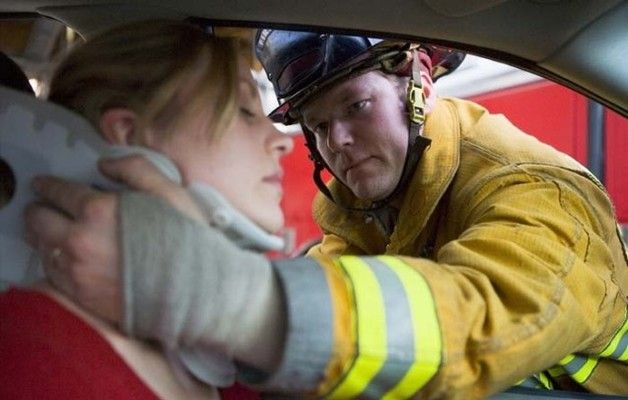Whiplash and Auto Injuries
What is Whiplash?

Your muscles and ligaments are a lot softer than the heavy bumper of your car. Even with little damage to a car, passengers can suffer serious spinal injury. Whiplash is quite a common, and potentially serious, kind of injury incurred in auto collisions.
Whiplash is an injury to the cervical spine, or neck, and occurs when the muscles and other soft tissues are hyper-stretched. Most instances of whiplash occur during a front- or rear-end automobile collision. The force of the vehicle being struck or striking another object are quite powerful, and can cause the neck muscles, ligaments, and tendons to twist and turn with incredible, unnatural force. These tissues, which are stretched far beyond their natural limits, can become torn and in some cases, permanently damaged. In addition, vertebral discs in the cervical spine can bulge, tear, and rupture.
Whiplash Symptoms?
Symptoms of whiplash may include one or more of the following:
- Blurred vision or dizziness
- Ear ringing
- General stiffness
- Headaches, especially behind the eyes
- Nausea
- Numbness, or burning, piercing and/or radiating pain in the neck, jaw, face, shoulders (and between the shoulder blades) and arms, which is usually a sign of a muscle or ligament tear
- Pain in any of the extremities
- Sharp pains when moving an extremity such as an arm or finger (a possible sign of disc damage)
- Swallowing difficulty
- Low back pain
The human body will attempt to immobilize injured areas following a trauma. This usually begins with “protective” muscle spasm. As the name implies, the spasm is an attempt to prevent further harm by immobilizing damaged joints and muscles. If function is not restored within 4-8 weeks, then scar tissue will be laid down at the site of injury hampering the return to full function. This will eventually lead to increased bone growth with the joint causing joint degeneration. All of this, however, can occur with little to no pain, and with little damage to the vehicle. In fact, research shows that increased “crushing” (as seen with higher-speed impacts) of the vehicle actually absorbs some of the shock of the impact and can lessen injury to the car’s occupants. When “crushing” does not occur (as seen with lower-speed impacts), nearly all of the shock is transferred to the driver and passengers.

Whiplash Treatment
Since injuries following a motor vehicle accident tend to affect many different tissues, a multi-pronged treatment program is often necessary to achieve full recovery. Ice, anti-inflammatory medications (Advil, Ibuprofen, Motrin, Aleve), painkillers and muscle relaxants can offer short-term relief, but do not address the source of the pain. These methods only mask the symptoms and can sometimes be harmful especially if it allows the injured person to perform activities that should be avoided until significant healing has occurred. Remember, pain and muscle spasms are both protective responses that attempt to prevent further damage. Chiropractic adjustments return joints to their proper motion and position allowing your body to regain its lost function. This often relieves pain caused by inflammation trapped within the joints and reduces strain on tight, fatigued and spasmed muscles. Chiropractic adjustments are also effective in reducing pressure on “pinched” nerves and joint irritation often associated with headaches.
When Should I Get Treatment?
Pain intensity does not measure your need for treatment. Injury often occurs long before pain is experienced. And with an automobile injury, pain may not set in until long after you have settled with the insurance companies – leaving you stuck with the costs of treatment. “An individual involved in a motor vehicle accident is nearly 7-times more likely to suffer neck degeneration within 7-years of the accident… than individuals that have not been involved in an auto accident,” states a study in the Journal of Bone and Joint Surgery. The goal of chiropractic care is to return the injured joints, muscles and nerves to complete, healthy function to reduce increased risk of degeneration.


